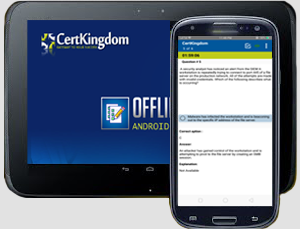Exam: AZ-800

|
|||||||||||||||||||||||||||
Exam AZ-800: Administering Windows Server Hybrid Core Infrastructure
Languages: English, Japanese, Chinese (Simplified), Korean, German, French,
Spanish, Portuguese (Brazil), Arabic (Saudi Arabia), Russian, Chinese
(Traditional), Italian, Indonesian (Indonesia)
Retirement date: none
This exam measures your ability to accomplish the following technical tasks:
deploy and manage Active Directory Domain Services (AD DS) in on-premises and
cloud environments; manage Windows Servers and workloads in a hybrid
environment; manage virtual machines and containers; implement and manage an
on-premises and hybrid networking infrastructure; and manage storage and file
services.
Skills measured
The English language version of this exam was updated on November 2, 2022.
Download the study guide in the preceding Tip box for more details about the
skills measured on this exam.
Deploy and manage AD DS in on-premises and cloud environments (30-35%)
Manage Windows Servers and workloads in a hybrid environment (10-15%)
Manage virtual machines and containers (15-20%)
Implement and manage an on-premises and hybrid networking infrastructure
(15-20%)
Manage storage and file services (15-20%)
Candidates for this exam are responsible for configuring and managing Windows
Server on-premises, hybrid, and Infrastructure as a Service (IaaS) platform
workloads. The Windows Server hybrid administrator is tasked with integrating
Windows Server environments with Azure services and managing Windows Server in
on-premises networks. This role manages and maintains Windows Server IaaS
workloads in Azure as well as migrating and deploying workloads to Azure. This
role typically collaborates with Azure administrators, enterprise architects,
Microsoft 365 administrators, and network engineers.
Candidates for this exam deploy, package, secure, update, and configure Windows
Server workloads using on-premises, hybrid, and cloud technologies. This role
implements and manages on-premises and hybrid solutions, such as identity,
security, management, compute, networking, storage, monitoring, high
availability, and disaster recovery. This role uses administrative tools and
technologies such as Windows Admin Center, PowerShell, Azure Arc, Azure Policy,
Azure Monitor, Azure Automation Update Management, Microsoft Defender for
Identity, Microsoft Defender for Cloud, and IaaS VM administration.
Candidates for this exam have several years of experience with Windows Server
operating systems.
Functional groups
Deploy and manage AD DS in on-premises and cloud environments (3035%)
Deploy and manage AD DS domain controllers
Deploy and manage domain controllers on-premises
Deploy and manage domain controllers in Azure
Deploy RODCs
Troubleshoot FSMO roles
Configure and manage multi-site, multi-domain, and multi-forest environments
Configure and manage forest and domain trusts
Configure and manage AD DS sites
Configure and manage AD DS replication
Create and manage AD DS security principals
Create and manage AD DS users and groups
Manage users and groups in multi-domain and multi-forest scenarios
Implement group managed service accounts (gMSAs)
Join Windows Servers to AD DS, Azure AD DS, and Microsoft Azure Active
Directory (Azure AD), part of Microsoft Entra Implement and manage hybrid
identities
Integrate Microsoft Azure Active Directory (Azure AD), part of Microsoft Entra,
AD DS and Azure AD Domain Services
Implement Azure AD Connect
Manage Azure AD Connect Synchronization
Implement Azure AD Connect cloud sync
Manage Azure AD Domain Services
Manage Azure AD Connect Health
Manage authentication in on-premises and hybrid environments
Configure and manage AD DS passwords
Manage Windows Server by using domain-based Group Policies
Implement Group Policy in AD DS
Implement Group Policy Preferences in AD DS
Implement Group Policy in Azure AD DS
Servers by using Azure Arc
Assign Azure Policy Guest Configuration
Deploy Azure services using Azure VM extensions on non-Azure machines
Manage Updates for Windows machines
Integrate Windows Servers with Log Analytics
Integrate Windows Servers with Microsoft Defender for Cloud
Manage IaaS VMs in Azure that run Windows Server
Implement Azure Automation for hybrid workloads
Create runbooks to automate tasks on target VMs
Implement Azure Automation State Configuration to prevent configuration drift
in IaaS machines
Manage virtual machines and containers (1520%)
Manage Hyper-V and guest virtual machines
Enable VM Enhanced Session Mode
Manage VM using PowerShell Remoting, PowerShell Direct and HVC.exe
Configure nested virtualization
Configure VM Memory
Configure Integration Services
Configure Discrete Device Assignment
Configure VM Resource Groups
Configure VM CPU Groups
Configure hypervisor scheduling types
Manage VM Checkpoints
implementing high availability for virtual machines
Manage VHD and VHDX files
Configure Hyper-V Network Adapter
Configure NIC Teaming
Configure Hyper-V Switch
Create and manage containers
Create Windows Server Container Images
Manage Windows Server Container Images
Configure Container Networking
Manage container instances
Manage Azure Virtual Machines that run Windows Server
Manage Data Disks
Resize Azure VM
Configure Continuous delivery for an Azure VM
Configure connections to VMs
Manage Azure VM network configuration
Implement and manage an on-premises and hybrid networking infrastructure
(1520%)
Implement on-premises and hybrid name resolution
Integrate DNS with AD DS
Create and Manage zones and records
Configure DNS forwarding/conditional forwarding
Integrate Windows Server DNS with Azure DNS private zones
Implement DNSSEC
Manage IP addressing in on-premises and hybrid scenarios
Implement and manage IPAM
Implement and configure the DHCP server role (on-premises only)
Resolve IP address issues in hybrid environments
Create and manage scopes
Create and manage IP reservations
Implement DHCP High Availability
Implement on-premises and hybrid network connectivity
Implement and manage the Remote Access role
Implement and manage Azure Network Adapter
Implement and manage Azure Extended Network
Implement and manage Network Policy Server role
Implement Web Application Proxy
Implement Azure Relay
Implement Site to Site VPN
Implement Azure Virtual WAN
Implement Azure AD Application Proxy
Manage storage and file services (1520%)
Configure and manage Azure File Sync
Create Azure File Sync Service
Create Sync Groups
Create Cloud Endpoints
Register servers
Create Server Endpoints
Configure Cloud Tiering
Monitor File Sync
Migrate DFS to Azure File Sync
Configure and manage Windows Server file shares
Configure Windows Server file share access
Configuring File Screens
Configure FSRM quotas
Configure BranchCache
Implement and configure Distributed File System (DFS)
Configure Windows Server storage
Configure disks and volumes
Configure and manage Storage Spaces
Configure and manage Storage Replica
Configure Data Deduplication
Configure SMB direct
Configure Storage QoS
Configure File systems
AZ-800 Brain Dumps Exam + Online / Offline and Android Testing Engine & 4500+ other exams included
$50 - $25 (you save $25)
Buy Now
QUESTION 1
You need to configure the Group Policy settings to ensure that the Azure Virtual
Desktop session hosts meet the security requirements.
What should you configure?
A. loopback processing in GPO4
B. security filtering for the link of GPO1
C. loopback processing in GPO1
D. the Enforced property for the link of GPO4
E. the Enforced property for the link of GPO1
F. security filtering for the link of GPO4
Answer: A
QUESTION 2
What should you implement for the deployment of DC3?
A. Azure Active Directory Domain Services (Azure AD DS)
B. an Azure virtual machine
C. an Azure AD administrative unit
D. Azure AD Application Proxy
Answer: B
QUESTION 3
You need to meet the technical requirements for Server1.
Which users can currently perform the required tasks?
A. Admin3 only
B. Admin1 and Admin3 only
C. Admin1 only
D. Admin1, Admin2, and Admin3
Answer: B
QUESTION 4
You need to meet the technical requirements for the site links.
Which users can perform the required tasks?
A. Admin1, Admin2, and Admin3
B. Admin1 and Admin3 only
C. Admin1 only
D. Admin1 and Admin2 only
E. Admin3 only
Answer: D
QUESTION 5
You need to meet the technical requirements for User1. The solution must use
the principle of least privilege.
What should you do?
A. Add Users1 to the Server Operators group in contoso.com.
B. Create a delegation on contoso.com.
C. Add Users1 to the Account Operators group in contoso.com.
D. Create a delegation on OU3.
Answer: D
Buy Complete
Abbott United States 2023-10-01 1:02:22
'Im glad to hear that you found the relevant questions helpful in your
preparation. If you have any more questions or need assistance in the future,
feel free to reach out. Best of luck in your future endeavors!
Elliot United States 2023-10-03 10:26:56
Is the premium dump exam thanks for your support.
Murray Germany 2023-10-03 08:56:57
i am just going through some AZ-800 dumps�.you know what? they are very
ideal for exam prep.
Adair Albania 2023-10-03 00:22:33
I passed the exam using a Premium dump file. It's crucial to focus on
comprehending the questions and answers rather than simply memorizing them..
Ted South Africa 2023-10-02 03:13:06
I'm delighted to have discovered this website; I just passed with a score of
937!.
Ron United States 2023-09-28 10:40:46
Incredibly useful! I passed the exam this Saturday with a score of 860 out
of 1000 points. Nearly everything I encountered here appeared on the actual
exam.!
Griffith United States 2023-09-28 01:32:02
These dumps appear to be about 80% accurate. If you've successfully passed
the exam using them, please share your experience and comments here..
Marlon India 2023-09-26 13:37:34
Hello everyone, I'm planning to take the exam in two weeks, and I wanted to
inquire if anyone who has recently taken the exam can confirm the validity of
the dump. Thank you!.
Moses United States 2023-09-22 12:52:10
Is the premium AZ-800 still valid for use in the United States?
Beau United States 2023-09-21 22:35:57
I'll be taking the AZ-800 exam soon. Can these dumps guarantee success? Have
any individuals used them and successfully passed their exam??
Leonard United States 2023-09-20 23:19:58
Premium file is 87% valid. Excellent study guide.
Prescott United States 2023-09-20 03:45:19
The premium materials proved to be valid, and I passed the exam in the
United States with a score of 947, all thanks to this dump.
Quintion United States 2023-09-19 14:42:54
Hi guys, please advise if the premium paper is still valid in September
2023?
logged members Can Post comments / review and take part in Discussion
Certkingdom Offline Testing Engine Simulator Download
Prepare with yourself how CertKingdom Offline Exam Simulator it is designed specifically for any exam preparation. It allows you to create, edit, and take practice tests in an environment very similar to an actual exam.
Supported Platforms: Windows-7 64bit or later - EULA | How to Install?
FAQ's: Windows-8 / Windows 10 if you face any issue kinldy uninstall and reinstall the Simulator again.
Download Offline Simulator-Beta
Certkingdom Testing Engine Features
- Certkingdom Testing Engine simulates the real exam environment.
- Interactive Testing Engine Included
- Live Web App Testing Engine
- Offline Downloadable Desktop App Testing Engine
- Testing Engine App for Android
- Testing Engine App for iPhone
- Testing Engine App for iPad
- Working with the Certkingdom Testing Engine is just like taking the real tests, except we also give you the correct answers.
- More importantly, we also give you detailed explanations to ensure you fully understand how and why the answers are correct.
Certkingdom Android Testing Engine Simulator Download
Take your learning mobile android device with all the features as desktop offline testing engine. All android devices are supported.
Supported Platforms: All Android OS EULA
Install the Android Testing Engine from google play store and download the app.ck from certkingdom website android testing engine download

Certkingdom Android Testing Engine Features
- CertKingdom Offline Android Testing Engine
- Make sure to enable Root check in Playstore
- Live Realistic practice tests
- Live Virtual test environment
- Live Practice test environment
- Mark unanswered Q&A
- Free Updates
- Save your tests results
- Re-examine the unanswered Q & A
- Make your own test scenario (settings)
- Just like the real tests: multiple choice questions
- Updated regularly, always current




